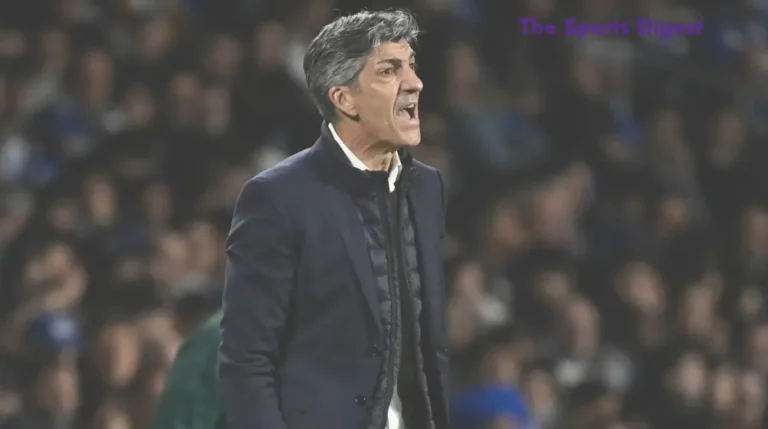Perez’s Decisions and Real Madrid Paradoxes
Years have passed, and many players have left Real Madrid, but one player’s departure remains deeply memorable in the minds of Madridistas, especially in the context of the decisions made by club president Pérez. That player is Arjen Robben, who was in the prime of his career when Pérez made one of the most controversial decisions in the club’s history. Some consider letting Robben go as one of the worst decisions in Real Madrid’s history, while others believe it was part of Pérez’s plan for change during that period. In this article, we will discuss the decisions Pérez made during that time, both positive and negative, and the paradoxes that resulted from them.
Table of Contents
Positive Decisions during Pérez’s Tenure
It cannot be denied that Pérez’s tenure saw some positive decisions that contributed to making Real Madrid one of the most prominent clubs in the world. First and foremost, there was the attempt to strengthen the squad with top names, which paved the way for the team to win several trophies. Pérez was also keen on developing the team through big signings.
Signing Cristiano Ronaldo and Kaká
One of Pérez’s most positive decisions was signing Cristiano Ronaldo from Manchester United in 2009. This move marked the beginning of a new era for Real Madrid. Ronaldo was not just one of the best players in the world at the time; he brought with him experience and skills that made him a pivotal player in the club’s plans.
Along with Ronaldo, signing Brazilian Kaká was another significant move to strengthen the team’s ability to compete in major competitions. Kaká was one of the best players in the world, and his transfer to Real Madrid was one of the biggest deals at the time. These major signings made Real Madrid look like a team capable of competing for both domestic and European titles.
Other Signings
Although some of the signings were met with questions and criticism, Pérez was keen on bringing in players who could perform at a high level. Among those players who were signed during this period were Xabi Alonso, Carvajal, and Granero. These players gave the team significant support in defense and midfield, which helped restore some stability to the squad.
Rebuilding the Team
During that period, Pérez was focused on rebuilding the team, aiming to achieve a balance between youth and experience. The initial goal was to strengthen the defense, followed by signing attacking players to complete the project. However, this project coincided with Pérez’s ambitions to recreate the “Galácticos,” a strategy that sought to make Real Madrid one of the strongest teams globally by acquiring the best players available.
Negative Decisions during Pérez’s Tenure
Despite these achievements, Pérez also made several controversial decisions that had a negative impact on the team’s performance in the long run. The most significant of these decisions was the departure of Arjen Robben, which remains a topic of debate to this day among Real Madrid fans.
Letting Arjen Robben Go
The pivotal moment was when Pérez decided to sell Arjen Robben to Bayern Munich in 2009, despite the fact that Robben was one of the club’s standout players at the time. Robben was not just an ordinary player, but one of the most influential attacking forces in the team, and he could have formed a perfect attacking trio with Cristiano Ronaldo and Kaká. With his incredible pace, dribbling ability, and goal-scoring knack, Robben could have been a key figure in the team’s success.
However, Pérez’s decision was to the contrary, as he wanted to rid the squad of players brought in by his predecessor Ramón Calderón, like Robben, in order to make room for new stars. In the years that followed, Robben became a pivotal figure for Bayern Munich, leading them to many domestic and European titles.
Sacrificing Stars from Calderón’s Era:
Another negative decision made by Pérez was sacrificing many of the stars brought in by Ramón Calderón, as Pérez aimed to implement a new policy based on acquiring even bigger players. While the team was struggling to replace many of these important players, Pérez turned his focus to signings such as Ricardo Carvalho and Nacho Fernández. While some of these players did provide good performances, sacrificing players like Robben and others such as Juan Mata and Robben de Larsen negatively affected the team’s stability.
Major Paradoxes
One of the most striking paradoxes resulting from these decisions is the story of Arjen Robben after leaving Real Madrid. At the time of his departure, Robben went on to prove his immense value at Bayern Munich, becoming a key player for the club and leading them to many titles.
One of the biggest paradoxes is his involvement in the 2010 UEFA Champions League final, where Bayern Munich played against Inter Milan at the Santiago Bernabéu. At that moment, Real Madrid was absent from the competition, and the final served as a glaring paradox between what Real Madrid could have been had they kept a player like Robben.
Another major paradox is Robben’s success in the Bundesliga with Bayern Munich, where he became one of the top players in Europe, leading the Bavarians to several titles. Meanwhile, Real Madrid was struggling to achieve balance due to changes in club policies.
Conclusion
In the end, the story of Arjen Robben remains one of the most debated chapters in Real Madrid’s history. The decisions Pérez made during that period contributed to the formation of a new image for the club, but they also caused the loss of golden opportunities that could have made a huge difference in the team’s history. Ultimately, the discussion around these decisions and paradoxes serves as a lesson in the importance of making crucial decisions in the world of football, where every choice can have a lasting impact on the team’s success and legacy.
Have you ever read an article like this?
There are no reviews yet. Be the first one to write one.






